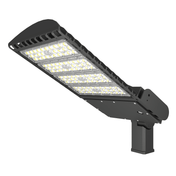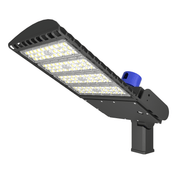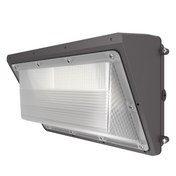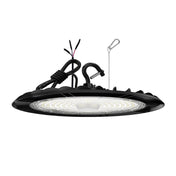LED Parking Lot Lights: Revolutionizing Outdoor Illumination with Brightness and Efficiency
In the realm of outdoor lighting, parking lots stand as critical spaces that demand reliable, bright, and cost-effective illumination. Traditional lighting options like high-pressure sodium (HPS) lamps have long been the go-to choice, but they fall short in terms of energy efficiency, lifespan, and light quality. Today, LED parking lot lights have emerged as the superior alternative, combining exceptional brightness with unmatched energy savings to transform parking lot environments. Whether for commercial complexes, residential communities, shopping malls, or industrial facilities, these lights offer a comprehensive solution that enhances safety, reduces operational costs, and minimizes environmental impact.
Unmatched Brightness: Enhancing Safety and Visibility
One of the primary advantages of LED parking lot lights is their superior brightness and light quality. Unlike traditional HPS lamps that emit a warm, yellowish glow with limited coverage, LED lights produce a crisp, white light that closely mimics natural daylight. This type of illumination significantly improves visibility, making it easier for drivers to navigate parking spaces, identify obstacles, and detect pedestrians—critical factors in reducing accidents and enhancing overall safety.
Modern LED parking lot lights are available in a range of wattages, from 50W to 200W or higher, allowing for customization based on the size and layout of the parking lot. For example, a small residential parking area may require 50-100W LED lights, while a large commercial parking lot with wide lanes and multiple levels may need 150-200W fixtures. Additionally, LED lights offer excellent color rendering index (CRI) values, typically above 80, which means they accurately represent the colors of vehicles, signs, and people—further improving safety by ensuring that details are easily distinguishable even in low-light conditions.
Another key feature contributing to brightness is the beam angle of LED parking lot lights. These lights can be designed with narrow, medium, or wide beam angles to cover specific areas effectively. Wide beam angles (120 degrees or more) are ideal for large open spaces, while narrow beam angles (30-60 degrees) are suitable for targeting specific zones like parking spots or entry/exit points. This flexibility ensures that every corner of the parking lot is evenly lit, eliminating dark spots that pose safety risks.
Energy Efficiency: Cutting Costs and Reducing Carbon Footprint
Energy savings are perhaps the most compelling reason for switching to LED parking lot lights. LED technology is inherently more efficient than traditional lighting, converting up to 90% of electrical energy into light, compared to just 20-30% for HPS lamps. This translates to significant reductions in electricity consumption—typically 50-75% less energy than HPS systems.
To put this into perspective, consider a commercial parking lot with 50 HPS lamps, each consuming 150W. The total daily energy consumption would be 50 lamps × 150W × 12 hours (average operating time) = 90,000Wh or 90kWh. Switching to 100W LED lamps (which provide the same or better brightness) would reduce consumption to 50 × 100W × 12 = 60,000Wh or 60kWh—a 33% reduction. Over a year, this would save 30kWh × 365 = 10,950kWh. At an average electricity rate of $0.15 per kWh, the annual savings would be approximately $1,642.50. For larger parking lots with hundreds of lamps, the savings can be in the tens of thousands of dollars annually.
In addition to lower energy bills,
LED parking lot lights also contribute to environmental sustainability by reducing carbon emissions. The decreased energy consumption means less reliance on fossil fuels for electricity generation, helping organizations meet their green initiatives and reduce their carbon footprint. This makes LED lights not only a cost-effective choice but also an environmentally responsible one.
Long Lifespan and Low Maintenance: Minimizing Operational Hassles
LED parking lot lights boast an impressively long lifespan, far exceeding that of traditional lighting options. While HPS lamps typically last 10,000-20,000 hours, LED lights can last 50,000-100,000 hours or more. This means that once installed, LED parking lot lights can operate for 5-10 years without needing replacement, depending on daily usage.
The long lifespan of LED lights translates to significantly lower maintenance costs and fewer operational hassles. For parking lot managers, replacing lamps is a time-consuming and expensive task that often requires hiring maintenance crews and using lifts or ladders—especially for high-mounted fixtures. With LED lights, these replacements are needed far less frequently, reducing labor costs and minimizing disruptions to parking lot operations. Additionally, LED lights are more durable and resistant to shock, vibration, and extreme weather conditions (such as high temperatures, humidity, and cold), making them ideal for outdoor use where they are exposed to the elements.
Key Features to Consider When Choosing LED Parking Lot Lights
When selecting LED parking lot lights for a specific application, there are several key features to consider to ensure optimal performance and value:
-
Wattage and Lumen Output: The wattage of the LED light determines its energy consumption, while lumen output measures its brightness. It’s important to choose a light with the appropriate lumen output for the size of the parking area—too few lumens will result in inadequate lighting, while too many may be wasteful.
-
Color Temperature: Color temperature is measured in Kelvin (K) and determines the "warmth" or "coolness" of the light. For parking lots, a color temperature of 5000K-6500K (cool white) is recommended as it provides the best visibility and mimics natural daylight.
-
IP Rating: The IP (Ingress Protection) rating indicates the light’s resistance to dust and water. For outdoor parking lots, a minimum IP65 rating is essential, as it ensures the light is dust-tight and protected against low-pressure water jets (such as rain).
-
Dimming and Smart Controls: Many modern LED parking lot lights are compatible with dimming systems and smart controls, allowing for further energy savings by adjusting brightness based on occupancy or time of day. Motion sensors can also be integrated to turn lights on only when needed, reducing unnecessary energy use.
-
Warranty: A reliable warranty is a sign of quality. Look for LED parking lot lights with a warranty of 5-10 years, as this indicates the manufacturer’s confidence in the product’s lifespan and performance.
Conclusion: The Future of Parking Lot Illumination
LED parking lot lights have revolutionized outdoor illumination by offering a perfect blend of brightness, energy efficiency, long lifespan, and low maintenance. As organizations and communities increasingly prioritize safety, cost savings, and sustainability, LED lights have become the clear choice for parking lot lighting solutions. Whether upgrading an existing parking lot or designing a new one, investing in high-quality LED parking lot lights is a decision that delivers long-term benefits—enhancing safety for drivers and pedestrians, reducing operational costs, and contributing to a greener future.
With ongoing advancements in LED technology, these lights continue to improve in terms of performance, efficiency, and smart capabilities, making them an even more attractive option for years to come. By choosing LED parking lot lights, you’re not just illuminating a space—you’re investing in a solution that meets the needs of today while preparing for the challenges of tomorrow.








